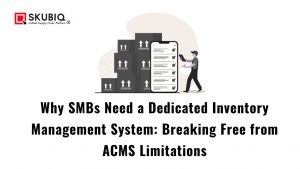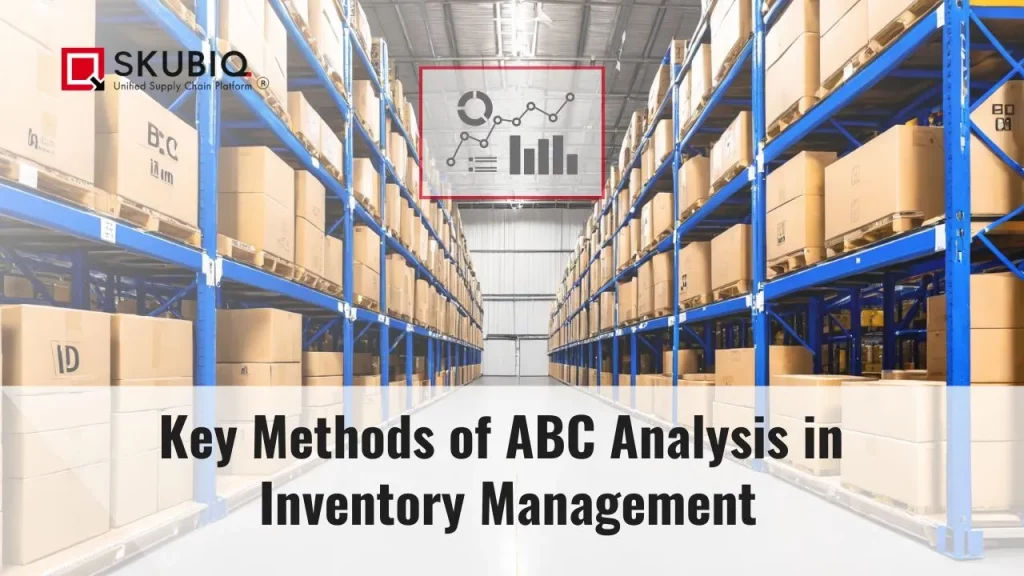Yard Management in Warehouse Management Systems (WMS) refers to the process of overseeing the movement and storage of trailers and containers within a facility’s yard. It is a critical component in the supply chain, ensuring that goods are handled efficiently from the time they arrive until they are dispatched. Effective Yard Management improves operational efficiency, reduces costs, and enhances overall supply chain visibility.
Definition of ABC Analysis
ABC Analysis, also known as the Pareto Principle or 80/20 Rule, is a method used in inventory management to categorize items based on their importance. This technique helps businesses prioritize their inventory management efforts, focusing on the most critical items that significantly impact overall costs and operations.
Importance of Inventory Management
Effective inventory management is crucial for maintaining optimal stock levels, reducing holding costs, and ensuring timely availability of products. Poor inventory management can lead to stockouts, excess inventory, and increased operational costs, impacting the overall efficiency and profitability of a business.
Relevance of ABC Analysis in Inventory Management
ABC Analysis is highly relevant in inventory management as it allows businesses to allocate resources more effectively, streamline inventory processes, and focus on high-priority items. By identifying which items contribute most to inventory value, companies can make more informed decisions and improve their inventory control practices.
Fundamentals of ABC Analysis
Historical Background
ABC Analysis originated from the Pareto Principle, named after the Italian economist Vilfredo Pareto. He observed that 80% of effects come from 20% of causes, which in inventory management translates to 80% of the inventory value being concentrated in 20% of the items.
Basic Principles of ABC Analysis
The core principle of ABC Analysis is categorizing inventory into three groups:
- Category A: High-value items with low sales frequency.
- Category B: Moderate-value items with moderate sales frequency.
- Category C: Low-value items with high sales frequency.
How ABC Analysis Works
ABC Analysis involves ranking inventory items based on their annual consumption value, calculated by multiplying the unit cost by the annual usage. Items are then classified into categories A, B, and C based on their contribution to the total inventory value.
Classifications in ABC Analysis
Category A Items
Category A items are high-value products that constitute a small percentage of the total inventory but have a significant impact on overall inventory costs. These items require tight control, frequent review, and accurate record-keeping to ensure their availability.
Category B Items
Category B items represent moderate-value products with a balanced impact on inventory value. These items are less critical than Category A items but still require regular monitoring and efficient management to maintain optimal stock levels.
Category C Items
Category C items are low-value products that make up the majority of the inventory but have a minimal impact on overall costs. These items are often managed with a simpler approach due to their lower importance and higher sales frequency.
Criteria for Classification
The classification criteria for ABC Analysis typically include factors such as annual consumption value, unit cost, and sales frequency. Businesses may also consider other factors like lead time, criticality, and supply risk when categorizing their inventory.
Steps to Implement ABC Analysis
Data Collection
The first step in implementing ABC Analysis is collecting accurate inventory data, including unit costs, annual usage rates, and total inventory value. This data serves as the foundation for the categorization process.
Categorization Process
Once the data is collected, inventory items are ranked based on their annual consumption value. The top 20% of items contributing to 80% of the inventory value are classified as Category A, the next 30% as Category B, and the remaining 50% as Category C.
Analysis and Interpretation
After categorization, businesses analyze the results to understand the distribution of their inventory and identify areas for improvement. This analysis helps in making informed decisions about inventory control policies and resource allocation.
Implementation Strategies
Effective implementation of ABC Analysis involves developing specific strategies for each category. For Category A items, businesses may implement strict control measures and frequent reviews. Category B items may require moderate monitoring, while Category C items can be managed with simpler controls.
Benefits of ABC Analysis
Improved Inventory Control
ABC Analysis enables businesses to focus their efforts on managing high-value items more effectively, leading to improved inventory control and reduced stockouts.
Cost Efficiency
By prioritizing high-value items, businesses can allocate resources more efficiently, reducing holding costs and minimizing excess inventory.
Enhanced Supplier Negotiations
Understanding the importance of different inventory categories helps businesses negotiate better terms with suppliers, particularly for high-value Category A items.
Better Resource Allocation
ABC Analysis allows businesses to allocate their resources more effectively, focusing on the most critical items and ensuring optimal stock levels for all categories.
Challenges in ABC Analysis
Data Accuracy Issues
Accurate data is essential for effective ABC Analysis. Inaccurate or incomplete data can lead to incorrect classifications and ineffective inventory management.
Dynamic Market Conditions
Market conditions can change rapidly, affecting the relevance of the initial classifications. Regular reviews and updates are necessary to maintain the effectiveness of ABC Analysis.
Implementation Costs
Implementing ABC Analysis can involve significant costs, particularly for data collection and analysis. Businesses need to weigh these costs against the potential benefits.
Resistance to Change
Employees may resist changes in inventory management practices, making it essential to communicate the benefits of ABC Analysis and provide adequate training.
Conclusion
Recap of Key Points
ABC Analysis is a critical tool in inventory management, helping businesses prioritize high-value items, reduce costs, and improve overall efficiency.
Importance of Regular Inventory Reviews
Regular reviews and updates to the ABC classifications are essential to maintain their relevance and effectiveness in dynamic market conditions.
Final Thoughts on ABC Analysis
ABC Analysis is a valuable technique for businesses looking to optimize their inventory management practices. By focusing on high-priority items, companies can achieve significant cost savings and operational improvements.
Recent Blogs

Unlocking ROI: Key Metrics to Track After Implementing SKUBIQ WMS


